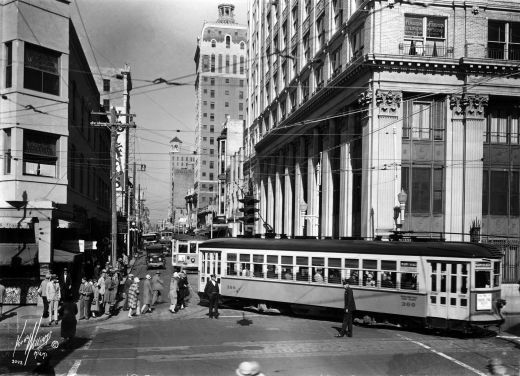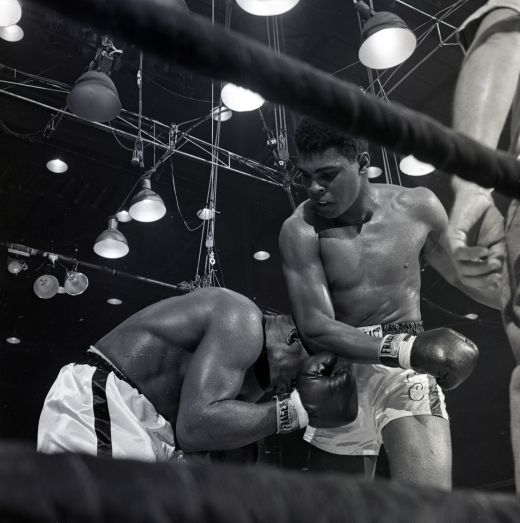
A streetcar makes the turn at NE 1 Avenue onto Flagler Street. The First National Bank of Miami occupied the columned building behind it. Circa 1935. Photo: Verne Williams. Courtesy HistoryMiami.
It’s a retort I expect in my native region, New England, steeped in Colonial-era history. Ironically, these are the same people whose idea of Miami is mired in the past, a time when Miami was primarily the roost of snowbirds—including the parents, grandparents, aunts, and uncles of these same New Englanders—fleeing the harsh Northeast winters for our balmy beaches.
What’s surprising is how frequently I hear the same quip throughout Florida. To be fair, it’s an understandable response, given the influx of new global residents to a city that seems to remake itself every month, a metropolis that thrives on the perpetual thrum of youthful vigor. However, it’s not only Miami’s newcomers who say this, but also longtime denizens who suffer a sort of myopia that limits their sight to the birth of this city in 1896 (a notable enough event in that the founding father was a woman, Julia Tuttle—making Miami the only major American city founded by a woman). While many view the city’s incorporation as ancient history, the story of Miami dates back more than 10,000 years to a settlement of Paleo-Indians on Biscayne Bay, and at HistoryMiami we have the artifacts to prove it.

Cassius Clay vs. Sonny Liston, February 25, 1964. Tim Chapman Collection, Courtesy HistoryMiami.
The problem with this approach is its failure to appeal to a large and growing population that has not yet identified itself as part of the local community, people who have not yet developed a sense of civic belonging, for whom Miami’s past does not yet resonate. How do you establish a nostalgic longing for a past time period or event that your largest potential audience has not experienced or identified with?
One way is to relate events and exhibits based on past milestones to current events. For example, one can easily imagine that an event based on Jim Morrison’s missteps in Miami 50 years ago can readily be related to Justin Bieber’s more recent bad behavior on the Beach, and that this connection might generate broad interest among several distinct demographic groups, including both young pop fans and their parents, presenting an opportunity to introduce a new, multi-generational audience to the habit of museum-going.
In addition, marking major moments in popular culture—those that transcend age groups and national origins—can not only bring people into a museum but also inspire a sense of community and civic pride. A perfect example is the 50th anniversary of The Beatles’ second appearance on the Ed Sullivan Show. Though it’s not well known outside our fair city, more established Miamians are aware that a week after Fab Four made their 1964 American television debut from CBS TV Studio 50 in New York City, the British Invasion landed on these shores; The Beatles’ second appearance on The Ed Sullivan Show was broadcast from The Deauville Hotel on Miami Beach. And all because Ed Sullivan, an ardent fan of boxing, wanted to be here for the Ali-Liston match. Younger residents and newcomers to the city have no idea of the role Miami played in launching the Beatles in America, but it’s one of those big cultural milestones that can encourage a neophyte to walk through the doors of a museum to find out more.
Stuart A. Chase is the Director of HistoryMiami.










